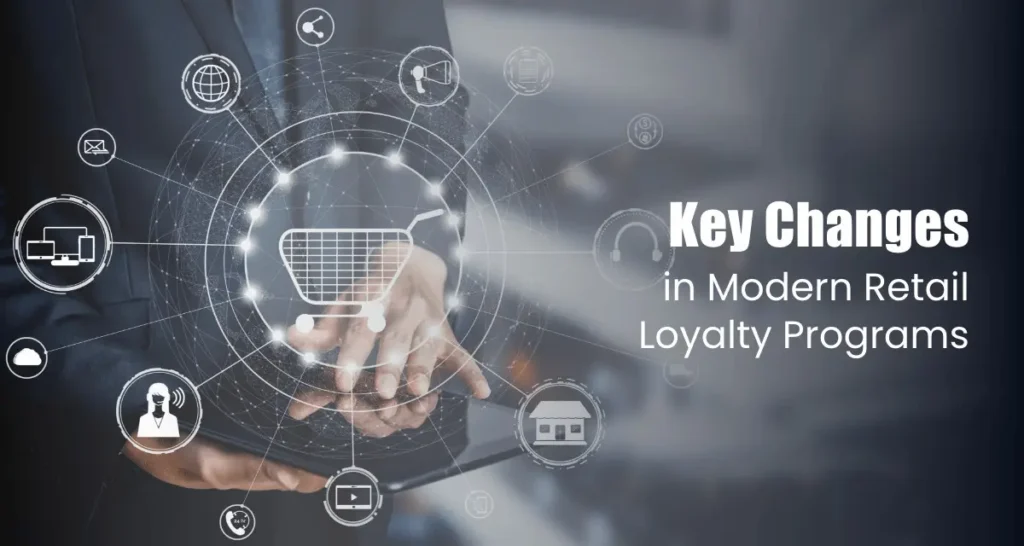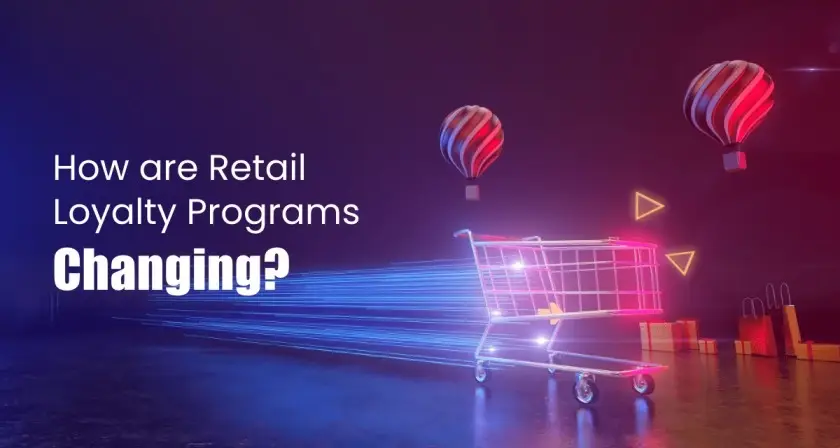The key to the success of loyalty programs in the retail segment has been the adaptive approach toward technology and customers.
Here is an overview of how retail loyalty programs have evolved over the years.
Retail Loyalty Programs Then and Now
The early roots of loyalty programs started in the late 18th century when retailers had tokens made of copper, which could be used for future in-store purchases. In the late 19th century, retail stores started using loyalty stamps (Green Shield) for purchases.
With the digital revolution, loyalty programs transformed into mobile-first and cross-platform features. Retailers started employing various mediums, from social media and digital accounts to various shopping channels.
Buyers now have the option to make a transaction via debit and credit card and earn points with every purchase.
Successful loyalty programs have online and offline reward benefits that help customers get the most out of their loyalty membership.
Three Innovative Strategies in Retail Loyalty Programs

With changing customer behavior, tech awareness, and accessibility, brands are focusing on agility in the loyalty program. Out of many changes happening in the industry, we have brought the most effective ways modern loyalty programs deploy for higher customer retention.
1. Personalization is increasing
Personalization is an essential element of any modern-day loyalty program. It is not just about putting a customer’s name in a promotional mail. It’s beyond that. Customers’ behavior and preferences are analyzed via collected data to provide a better experience. It’s all about using the right data at the right time!
Every transaction, purchase, and online activity creates data that can be used for the customization of rewards, offers, and incentives. With personalization, customers feel valued and connected to the brand. This results in higher retention rates for brands.
Example: Ben & Jerry’s: Flavor Fanatics
Famous ice cream brand Ben & Jerry’s made the loyalty program Flavour Fanatics to give personalized loyalty benefits to its customers. By signing up for the Flavour Fanatic program, customers get 10% off every purchase and perks like insider scoop and free cones on birthdays.
2. Brands are focusing more on building long-term relationships than on profits
Over the years, company goals with loyalty rewards have shifted across industries. Brands are shifting from transactional loyalty to emotional loyalty goals.
Retailers are focusing on customer relationship management because of the buying options available for customers. One can find the same product in various stores. And the only thing that makes them return to a business is how well they are treated.
Example: Sephora Loyalty Program
What made the Sephora Beauty Insider program famous on a global scale was the innovative reward benefits. With more than 17 million loyal members, the loyalty program makes up around 80% of Sephora’s annual sales.
While talking about the evolution of loyalty programs, Sephora’s loyalty program has been evolving since its launch in 2007. The changes were made to match the needs and wants of their customers.
From trial-size products, discounts, and partnering with brands, Sephora brought tier-based membership to enjoy unique perks tied to each level. For example, recently, they surprised members with birthday gifts across all tiers. This also included mini samples from brands like Drunk Elephant.
In 2019, Sephora revamped its tier-based system with more choices to get birthday perks like extra 250 points or a rotating gift that changes every month.
With such evolution, the loyalty program continues to be among the best retail loyalty programs in the world.
Sephora has retained its customers with a remarkable relationship management approach despite being expensive.
The flexibility to choose how customers want to redeem their points makes the program valuable and attractive.
3. Brands are driving emotional loyalty
Emotional loyalty means having a deeper connection with the customers. Customers who feel important and recognized emotionally connect with the brand, and that is when retention increases.
Millennials and GenZ are the most active buyers online. They crave the opportunity to contribute to the community more than any other generation.
Additionally, they trust brands that go beyond just selling or offering discounts. Helping the community creates an emotional bond between buyers and the brand.
As per the Wise Marketer survey, 21% of the companies offering loyalty programs classified their programs as more emotional than rational, and 54% of the respondents agreed that they plan to create an emotional loyalty program in the next two years.
Example: Kroger Rewards Program
One of the best examples of a loyalty program focusing on emotional loyalty is the Kroger Family of companies running the Community Rewards. The goal is to partner with the neighborhood community and help people live healthier lives with little effort.
The brand launched the reward program with its Shopper’s card loyalty upgrade, which allows customers to engage in charity donations. They can create a digital account and link the Shopper’s card to the account.
Customers can choose the organizations they want to support, and with every purchase, a percentage of the spending goes to the organization: no extra cost or additional fee.
Despite being expensive, customers are committed to spending their money for the cause as they can give back to the community.
4. Omnichannel loyalty programs are gaining traction
The omnichannel program focuses on providing the best shopping experience across all channels. This might include recommendations, instant access to multiple devices, and streamlined purchases. As a result, they not only improve customers’ opinions about a business but also bring real sales benefits.
Customers are on every platform today. They want to access and engage with brands on all platforms. This makes it essential for brands to be omnipresent.
According to a survey in 2018 by IRI, 74% of customers choose a brand based on its strong loyalty program. Further, 71% of brands that use omnichannel loyalty programs said transaction volume prompted by these programs improved by more than 50% over the previous years.
Key Takeaways
Retail brands are keeping up with changing customer behavior and the market landscape. The examples of a few brands above are reflecting the success they got with constant evolution.
Over the decades, customer loyalty in retail has evolved and become more influential with unique loyalty programs. What makes it compelling is how it unites the customers and makes them a part of the loyal customer base. The change signifies the focus on the emotional aspect and forging long-term relationships with customers.


